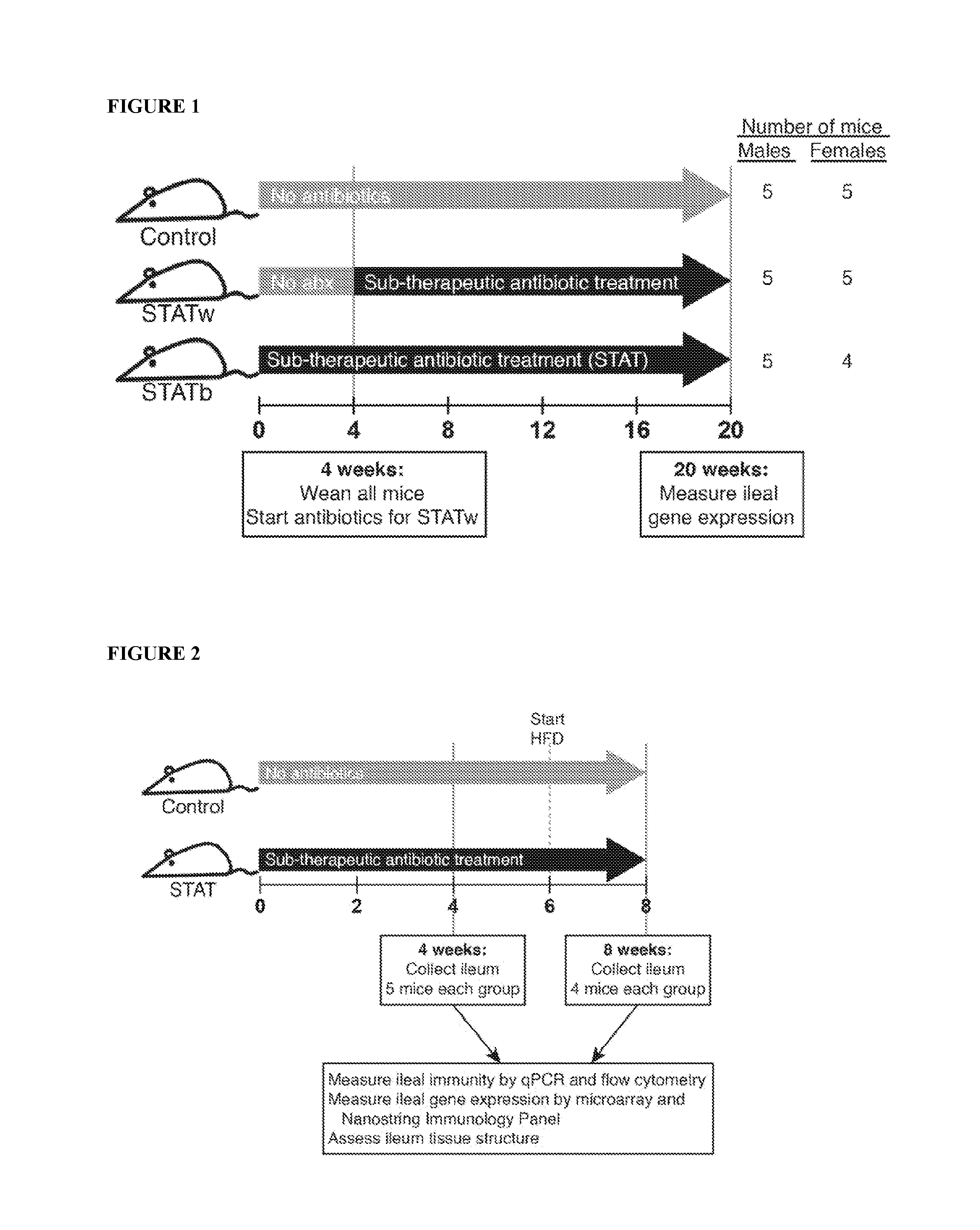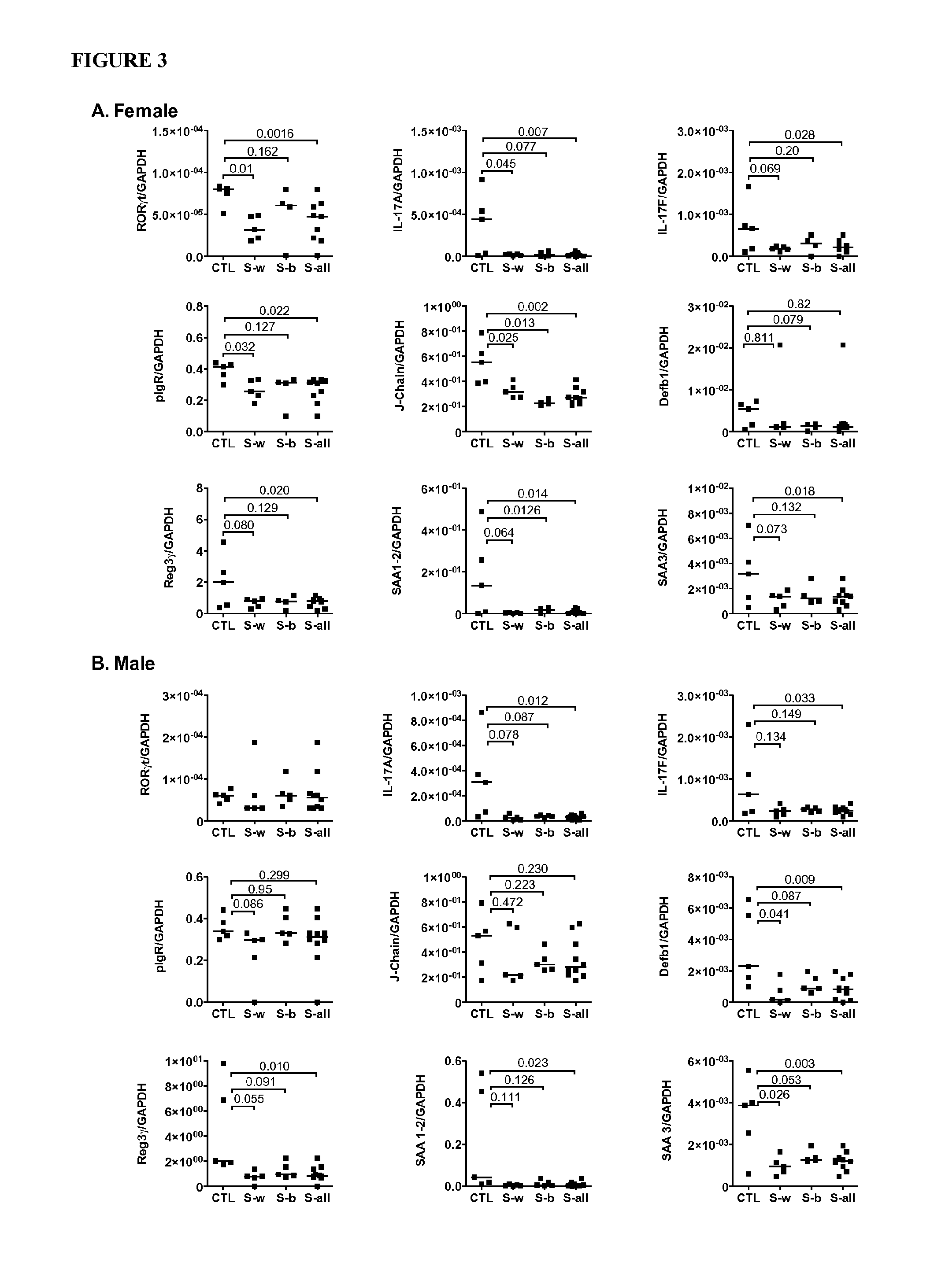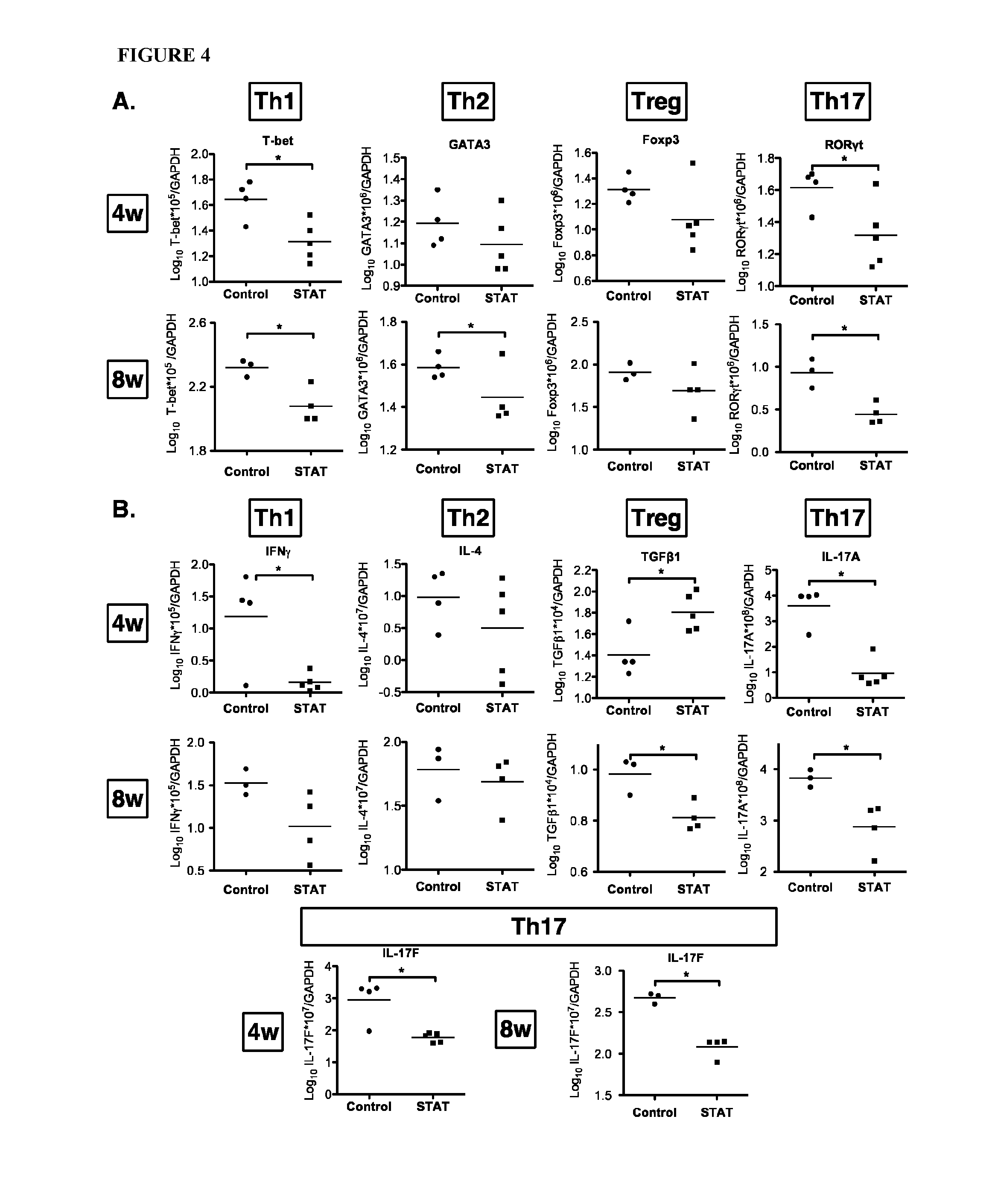Methods for manipulating immune responses by altering microbiota
a technology of immune response and microbiota, applied in the field of characterizing changes in mammalian microbiota, can solve the problems of inability to modify the progression of disease, difficult treatment of autoimmune diseases, and current treatments rarely provide a cur
- Summary
- Abstract
- Description
- Claims
- Application Information
AI Technical Summary
Benefits of technology
Problems solved by technology
Method used
Image
Examples
example 1
Use of Sub-Therapeutic Antibiotic Treatment (STAT) to Affect Immunity
[0176]This example demonstrates that the use of low-dose antibiotics, using penicillin as a model, can change microbiome compositions, which then change immune cell populations and effector molecules in the gut. All experiments were performed in mice, which were housed on a 12-hour light dark cycle, and all procedures were carried out under IACUC approved protocols.
[0177]TimeSTAT (demonstrates that initiating sub-therapeutic antibiotic treatment (STAT) at weaning or from birth can influence immune responses). C57BL / 6J (Jackson Labs, Bar Harbor, Me.) mice either received no antibiotics (control, females n=5, males n=5) or continuous STAT penicillin starting at birth (STATb, females n=4, males n=5), or at weaning at 4 weeks (STATw, females n=5, males n=5). Mice were weaned at 4 weeks onto normal chow (13.2% fat, 5053 PicoLab Rodent Diet 20, LabDiet, Brentwood, Mo.).
[0178]FIG. 1 shows a schematic of TimeSTAT study des...
example 2
TRANSTAT—Transmission of Altered Immune Phenotype Through Microbiota Transfer
[0197]Example 1 demonstrates strong associations between administering antibiotics and changes in intestinal immune functions. But to develop practical approaches to issues of immunity, it is important to determine whether antibiotics are working directly on the tissues or whether the effect of the antibiotics is mediated through their effects on microbiome composition. To determine this, microbiota from the STAT-exposed mice and the Control mice were harvested and transferred into germ-free mice. Transfer of microbiota to germ-free animals allows examining the characteristics of the microbiota, independent of any on-going host or drug effects. After the germ-free mice became “conventionalized” (i.e., colonized by a microbiota), the effects of the alternate sources of their microbiota on their immune characteristics were determined.
[0198]C57BL / 6J (Jackson Labs, Bar Harbor, Me.) mice either received no antib...
example 3
The Effect of Pulsed Antibiotic Treatment (PAT) on Immunity
[0212]The prior examples relate to manipulation of the microbiome by continuous exposure to low doses of antibiotics. In this example, the present inventors addressed giving discrete pulses of antibiotics for a few days at a time in relation to affecting immune phenotypes.
[0213]C57BL / 6 mice were fed a standard diet after weaning, and exposed to 3 pulses of therapeutic dose antibiotics (Amoxicillin or Tylosin), or no antibiotics, via their drinking water, all before 6 weeks of age. Mice were sacrificed at 6 weeks of age.
[0214]Tissue Collection.
[0215]The distal ileum (1 cm) without Peyer's Patches was collected from each mouse for RNA extraction and kept in RNAlater (Ambion) overnight at 4° C. Samples were stored at −80° C. until RNA extraction was performed.
[0216]LPL Lymphocyte Preparation.
[0217]Small and large intestines of mice were dissected, and all mesenteric fat and Peyer's patches were removed. Intestines were fileted ...
PUM
| Property | Measurement | Unit |
|---|---|---|
| Time | aaaaa | aaaaa |
| Time | aaaaa | aaaaa |
| Time | aaaaa | aaaaa |
Abstract
Description
Claims
Application Information
 Login to View More
Login to View More - R&D
- Intellectual Property
- Life Sciences
- Materials
- Tech Scout
- Unparalleled Data Quality
- Higher Quality Content
- 60% Fewer Hallucinations
Browse by: Latest US Patents, China's latest patents, Technical Efficacy Thesaurus, Application Domain, Technology Topic, Popular Technical Reports.
© 2025 PatSnap. All rights reserved.Legal|Privacy policy|Modern Slavery Act Transparency Statement|Sitemap|About US| Contact US: help@patsnap.com



